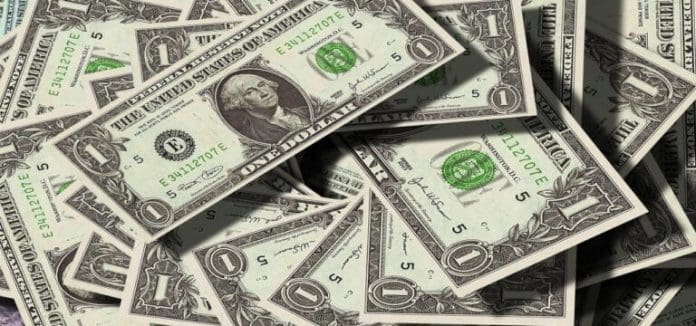The successive stimulus checks helped stave off a humanitarian and economic disaster. But it also brought with it the accusation of fomenting record inflation.
The pandemic and its immediate aftermath seem a distant memory but it was one of the toughest periods for the nation and the pandemic took a huge toll on people and subsequently on the economy. The initial denial by then-President Trump set the stage for an unprecedented level of natural emergency that killed hundreds of thousands and almost decimated the economy.
It wasn’t long ago that the federal government realized that the initial delay would cause the economy dearly and leave them vulnerable to a pandemic that had no cure, at least at that stage.
The sudden outbreak of the COVID-19 pandemic decimated the health system of the country, and then its economy. It would be months before the federal administration was able to build up a resistance against the damage done by the epidemic. But by then it lost hundreds of thousands of lives. The final tally was nearly 1.1 million out of close to 100 million affected.
The toll on the economy was just as widespread and damaging. With a total shutdown of the economy in the first quarter of 2020, it went into a tailspin and the US faced the worst recession after the Great Recession of 2007-2009.
Millions of Americans immediately lost their jobs and other sources of income as it was a total shutdown. The virus had by that time spread out deep into America, and it would be months before the federal administration could bring it under control.
Getting The Stimulus Checks To Americans Mattered More
At that time, the unanimous decision was that people had to get economic support fast if the government had to prevent mass starvation, homelessness, and credit defaults. The hitherto dormant Trump administration was forced to move in quickly to prevent a catastrophe. Policymakers, economists, and the bureaucracy moved in fast to send immediate relief to millions of Americans.
Within weeks of the shutdown, Congress had passed a $2.2 trillion stimulus check package in March 2020. The $1,200 stimulus check under this act was followed by two more stimulus checks in December of the same year and in March 2021. The last one came about after a change of regime in Washington.
President Joe Biden stepped in January 2021 even as the $600-second stimulus check was being sent. Despite cries of a fake election and attempts to stop the final verdict, president Biden moved in with the American Rescue Plan Act signed by him in March 2021.
Within a week of the signing of the payment on March 11, 2021, the third stimulus check under the American Rescue Plan Act signed by the incoming Democrat President began hitting accounts across the country.
While the Internal Revenue Service was slow in compiling the list of beneficiaries and sending out the payment during the first and the second stimulus checks, in this instance they acted with alacrity realizing the desperation of Americans who struggled to put food on the table, pay their mortgage and rent, and pay their medical bills.
The three stimulus checks were the most generous fiscal response across the world to the ravages of the global virus.
The introduction of stimulus checks coincided with the rise in the prices of goods across the board. As prices continued to rise touching a record level of inflation, it became clear that initially, America had not factored in the inevitable rise in prices as a result of multiple factors that were both domestic and international, over which the US had little control.
The war in Europe, into which the US pointlessly interfered, and the worldwide supply disruption, along with the stimulus checks to some extent, added to the woes. It remains unclear whether inflation has peaked, but the situation continues to be politically and economically toxic.
It has caused many economists, experts, and policymakers to argue on whether the stimulus checks had a major role to play in the price rise that has touched record levels.
The benefits of the stimulus check far outweighed the side effects. At the time it was issued it was the only cure for the economic mayhem that the pandemic set loose. The stimulus checks undoubtedly helped Americans in some very tangible ways. It reduced poverty.
Millions of households were staring at the prospect of going without food, defaulting on their credit payments, and going homeless for the first time in their lives as a result of the unprecedented pandemic.
Around 11.7 million people were saved from sinking into poverty according to the US census bureau’s reports. The poverty rate dropped to 9.1% from 11.8%. This figure is just for 2020. The poverty rate for 2021 fell even further to 7.7% as per a report in July 2021 by the Urban Institute.
It was clear from the numbers and other research that the stimulus checks had led to a dramatic decline in poverty, even more than in far more normal times.
On a larger scale, the stimulus checks also lessened the agony of workers as they faced the worst economic crisis in modern times. This also helped the economy bounce back within a brief period of recession.
Even as Americans received the first round of the stimulus check in April 2020, the unemployment rate had shot up to a disastrous 14.7%. But by the third stimulus check and two years later unemployment has almost touched pre-pandemic levels. People attacking the stimulus checks tend to forget that the payments were a lifesaver and also protected the economy from a long deep recession, similar to the one seen in 2007-2009.
But evidence also points out that the stimulus checks contributed to the rising prices of goods. The Federal Reserve of San Francisco estimates that the stimulus check could have raised American inflation by around 3% by the end of end-2021.
This was a foreseen issue and a deep recession was inevitable at some point, preceded by high inflation. As the Federal Reserve rushes in to bring down prices by raising interest rates twice, the US could be slipping into a recession in 2023.






